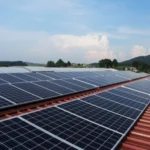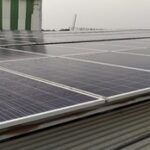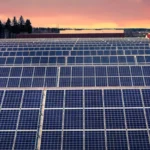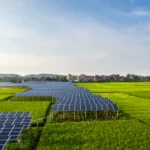Blame it on Sun! Average Solar PLFs not satisfactory
Blame it on Sun! Average Solar PLFs not satisfactory
Poor performance of solar projects has become a cause of worry recently. As a benchmark the large field based projects were expected to generate around 1500 kWh of electricity for each KW of solar panels installed in the Northern India. However the performance of these projects has not been satisfactory. The table below shows the actual number of units generated per kW of solar panels as recently announced by the Agencies for different Northern India states for the year 2012-13.
| States | Capacity (MW) | 2012-13 (PLF) | 2012-13: Equivalent kWh generated per kW |
| Haryana | 7.8 | 14.50% | 1270.2 |
| Punjab | 6 | 10.50% | 919.8 |
| Rajasthan | 11 | 16.00% | 1401.6 |
| Uttar Pradesh | 7 | 8.16% | 714.816 |
| Uttarakhand | 5 | 14.70% | 1287.72 |
Few solar plants have not reported data for all the months for various reasons. Overall the data has released for 69 power plants and the corresponding average PLFs of all the states for the year 2012-13.
Of course some of these projects have generated electricity as expected but many have not.
The performance of the project in terms of electricity generation depends on the quality of panel. It implies that a 15% efficiency panel should convert 15% of the radiation falling on it to the useful electricity. Also polysilicon panels should not be having performance degradation more than 0.7% to 1% year on year.
The electricity generation will also depend on the sun radiation available in that year.
Experts say that the generation also depends on the tilt of the panels installed. The radiation available on a flat surface would be significantly lower than that on the tilted surface.
Jury is still out to understand what caused the poor performance of these projects. A high radiation with humid condition does not support high generation for example.
Year 2013 remained a year when Indian witnessed an extra-ordinary monsoon. PID problem of Indian solar panel manufacturers still remain and need to be resolved.
For the time being we can blame it on Sun! Sun was not kind enough to provide sufficient radiation. Hopefully we get better radiations and better generation in future years and for the two years that have already passed.
Suggested Articles

How to Maintain Solar Power System for Homes, Industries & Commercial Buildings
A solar power generating system converts sunlight into electricity for residential, industrial, and commercial use. This blog explains the components, working, and benefits of solar systems, helping you understand how to harness solar energy efficiently and sustainably.

पीएम सूर्य घर योजना 2025 – मुफ्त बिजली पाने के लिए ऐसे करें आवेदन
पीएम सूर्य घर योजना ऑनलाइन आवेदन 2025: मुफ्त बिजली पाने की आसान स्टेप-बाय-स्टेप प्रक्रिया यहाँ पढ़ें।

How Are Solar PV Modules Made? Complete Guide to the Manufacturing Process
Choosing the right solar panels can be confusing with so many options in the market. This guide simplifies solar panel selection by comparing types, efficiency ratings, and cost factors. Whether for your home, business, or industry, learn how to make an informed decision and maximize the return on your solar investment.

Delhi Government Pledges to Boost Renewable Energy Generation
Delhi, the capital city of India, is moving towards a greener future with an ambitious plan to generate an additional 6,000 MW of electricity using renewable energy sources.

Group Net Metering for Solar Projects: A Smart Way to Maximize Solar Energy Generation
Discover how group net metering allows multiple participants to share solar energy from a single project, reduce electricity bills, and enhance solar efficiency.

Solar Rooftop Subsidy: Why It’s Time for a Change of Mindset
While solar rooftop subsidies help reduce upfront costs, true adoption requires a mindset shift. This guide discusses why businesses and homeowners should focus on long-term benefits, sustainability, and strategic planning beyond relying solely on incentives.

AVANCIS Pushes CIGS Thin-Film Solar Modules Beyond 20% Efficiency
AVANCIS achieves a breakthrough in solar technology, pushing CIGS thin-film modules beyond 20% efficiency for higher performance and energy output.

Solar Projects Challenges in India: Module Supply Shortages and Policy Delays Slow Growth
India’s utility-scale solar projects face delays due to module supply shortages and policy challenges, impacting the growth of renewable energy.